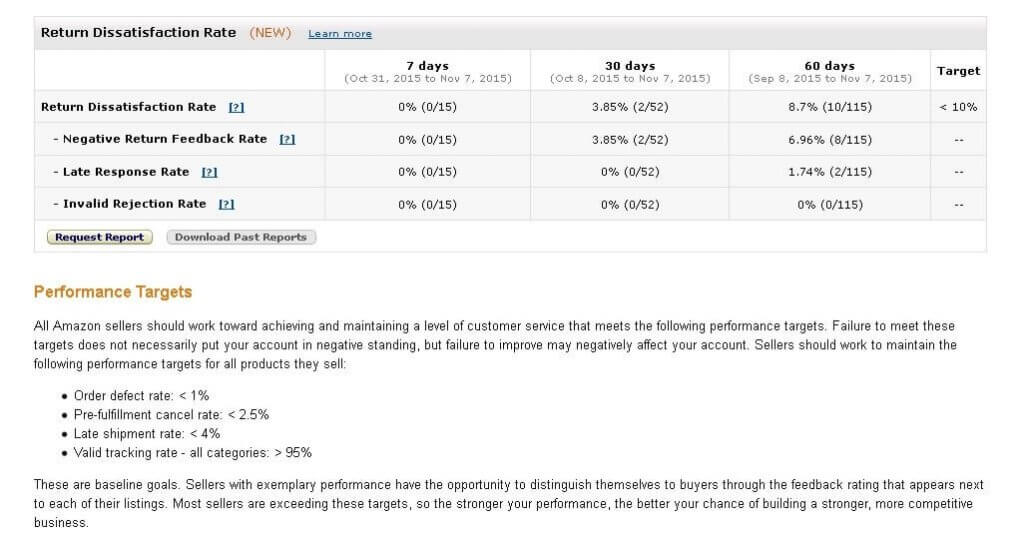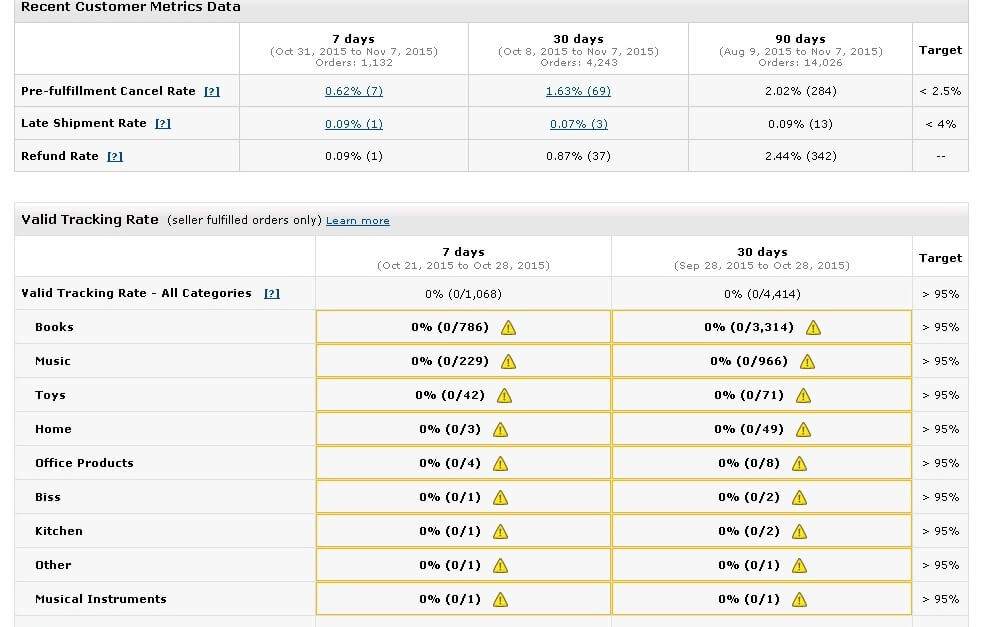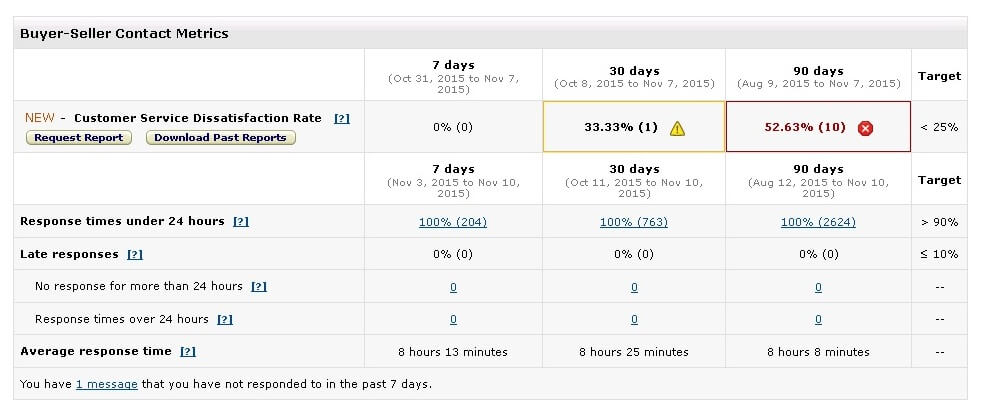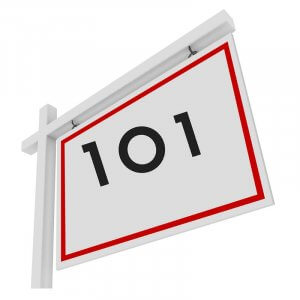Who’s that knocking, you ask? The Holidays. So, let’s send those shipments out, brush up your inventory, refine your account management routine and polish your performance before your customers start ticking gifts off their shopping lists. We’ll be sharing some basic guidelines to spare you the time it took seasoned sellers to master the fundamentals of selling on Amazon, giving you a head start over the new seller line-up.
Read more to find out how you could stay ahead of the game this holiday season.
We discussed sourcing, listing, storing and packing your Amazon inventory in our previous post. The time has come to start fulfilling your orders. Here’s what you need to know, in a nutshell:
1. Logistics
Amazon expects you to confirm your shipments within two business days, and to provide tracking numbers for all of them, if you’re an MFN seller (except if you have a specific lead time that they’re aware of). Come February 2016, this will be a requirement for all Amazon.com sellers.
Furthermore, you need to handle your FBA shipments to the fulfilment centers on your own. Individual merchant SKUs, shipment IDs and record IDs will be generated and made available in your Shipping Queue.
You can ship your orders using the Amazon website, depending on the venue you operate on. FBA shipments can also be created using specialized software like SellerEngine Plus, which uploads the inventory in bulk rather than asking you to create individual listings and corresponding labels, records and documents.
When you create your FBA shipments, be aware that different products will go to different fulfilment centers. Brand, product category, number of units and various other factors will determine where you need to send your products to, so check the warehouse before you sort, group and fit items into their boxes.
Keep track of your shipments to customers or FBA warehouses. FBA shipments will show up as ‘Checked-in’ when the Amazon warehouse acknowledges delivery, and ‘Receiving’ when items are being scanned into their inventory. It can take 3-5 business days for the inventory to be scanned and stored at the fulfilment center.
2. Inventory Management
A few basic tips:
- You need to generate a SKU for every item in your inventory file, which is a code unique to your business.
- Most product updates will take 15 minutes to show up on Amazon, but some can take up to 24 hours (ex. parent-child products.)
- All products require unique UPC/EAN codes, except private labelThis is what you call products manufactu... More, specialised accessories, non-consumer (B2B) products, custom-made products.
To Customize the Page View, use the Preferences feature explained in detail here. Your Low Price Comparison settings and preferences are especially important, as they will enable you to change your selling price and low price manually. Still, bear in mind that specialized software like Sellery can take over and simplify your repricing tasks.
Edit Listing Details manually as soon as you realize a product description is incorrect or incomplete, if the inventory upload has already been processed. Some changes will take place within 15 minutes, while others may require you to contact Amazon.
Adding an Image is vital because item listings for some product categories will be suppressed when they lack associated images. The Actions link next to the product takes you to the Manage Product Images feature, which includes 9 image slots.
You can also Copy a Listing using the Copy to a new product feature in the Actions link, provided you’re a Pro Merchant. If you need an item to be removed from your inventory and from Amazon’s offer page immediately, then Close a Listing, using the same Actions drop-down menu. To Relist, use the homonymous command in the same drop-down list.
3. Monitoring Account Health
PERFORMANCE METRICS
Once your orders start pouring in, keep a close eye on your performance to see how customers react to your products, and how efficient your overall service is. Checking your performance section on a daily basis is the easiest way to do that.

ODR (Order Defect Rate) is a total of the Negative FeedbackA performance rating on a scale of 1 to ... More rate, the A-Z Claim rate and the Service Chargeback rate divided by the total number of orders over the past 60 or 90 days (short-term or long-term ODR), and expressed in percentages. Orders are only counted once in this calculation, regardless of how many of these categories (negative feedback, A-Z claim or service chargeback they fit). ODRs above 1% generate warnings, and those above 1.19% trigger account suspension.
- Negative Feedback Rate: different from the feedback score displayed to customers, this metric is your negative feedback percentage out of all the feedback received over a certain period, and it’s drawn out of the ODR calculus once the feedback is removed.
- A-Z Claim Rate: ratio of official complaints filed by customers in accordance with Amazon’s A-to-Z money-back guarantee out of the total number of orders over a certain time-frame, withdrawn or not.
- Service Chargeback Rate: proportion of situations in which the customer asks for the charges to be reversed; when issued by the bank (not Amazon), they won’t affect your ODR.
Sellers have 5 business days to respond to customer disputes. Otherwise, Amazon will automatically grant buyers their claims.

Pre-Fulfillment Cancel Rate: number of orders canceled prior to dispatch, out of total orders received within a certain number of days, and which should be below 2.5%.
Late Shipment Rate: number of orders with overdue shipping confirmations out of total orders for that timeframe, ideally below 4%.

OTHER PERFORMANCE INDICATORS
- Refund Rate: seller-issued refunds over total number of orders within a certain timeframe.
- On-Time Delivery Rate: percentage of on-time deliveries per total tracked shipments over the course of 7, 30 or 90 days, ideally over 97%.
- Valid Tracking Rate: percentage of tracked shipments out of the total in a given interval, preferably over 98%.
- Contact Response Rate: replies to customer queries in 24 hours or less, including on weekends, over 7, 30 or 90-day intervals; the target is 90%.
If you haven’t heard of Contact Response Time Metrics before, you’re bound to be blown away when you find out that Amazon expects you to reply to customers within 24 hours, even when you’ve set your account to ‘vacation mode’. Fear not; this report won’t tarnish your reputation or lead to a suspension if your response time is ‘Poor’ or ‘Fair’, but it can be quite the eyesore on your Seller CentralAmazon Seller Central is a portal or a h... More homepage.
If you’re selling locally and only starting out with a few items in your inventory, you probably won’t be needing any outside help dealing with your customer support, especially if you chose to fulfil your orders via FBA. But bear in mind that FBA sellers are responsible for their performance metrics, just like everyone else.
The most important tip we can offer is to personalize your customer support operations. There’s not much leeway for Amazon sellers when it comes to making their service stand out, so molding your interactions to every specific customer is your best shot in ensuring customer retention.

ACCOUNT HEALTHAccount Health is an Amazon page which c... More TOOLS
Product Performance Reports:
- Top Performers: most popular, recently sold items with less than 5% imperfections over the past 90 days
- Bottom Performers
The Perfect Order Performance (POP) indicator refers to the percentage of orders without incidents, including negative feedback, claims, chargebacks, cancellations, late shipments, refunds and customer queries. These incidents also serve to determine your seller rating for the past year, which is a weighted average of the points you receive for each of these incidents, with time having the greatest impact.
Customer Satisfaction Reports:
- Order quality: points per order
- Performance over time: metrics for past months
- Performance by product line: effect of listing a product line
Once you have a solid grasp on your performance indicators, you can move on to the business reports section, if you feel like you still haven’t mastered the ins and outs of your sales dynamics.
BUSINESS REPORTS
The Dashboards reveal day, week, month or year-to-date sales, year-on-year sales, etc., and data is displayed for up to two years and downloadable as a .csv file.
Business Reports are your source of information concerning pageviews, how often you have the Buy BoxThis refers to the situation where a sel... More, and many other useful indicators, with various graphs to help you visualize these results.
Amazon Selling Coach Reports, on the other hand, are notifications generated whenever Amazon identifies product, inventory or fulfillment opportunities, whereby you’re advised to restock based on recent sales activity.
Hopefully, your business will do well, and you’ll have so many orders you won’t know what to do with them. When that happens, complications tend to follow, so be open to the prospect of hiring specialists who can handle customer and Amazon communications for you. Our free Customer Support Strategies eBook will fill you in on everything you need to know.
Check the entire “How to sell on Amazon” series here: Part 1, Part 2 and Part 3
Irina H. is our International Business Development Specialist and our company do-all, whose motto is ‘Never give up, never give in, and always give it your best’.






